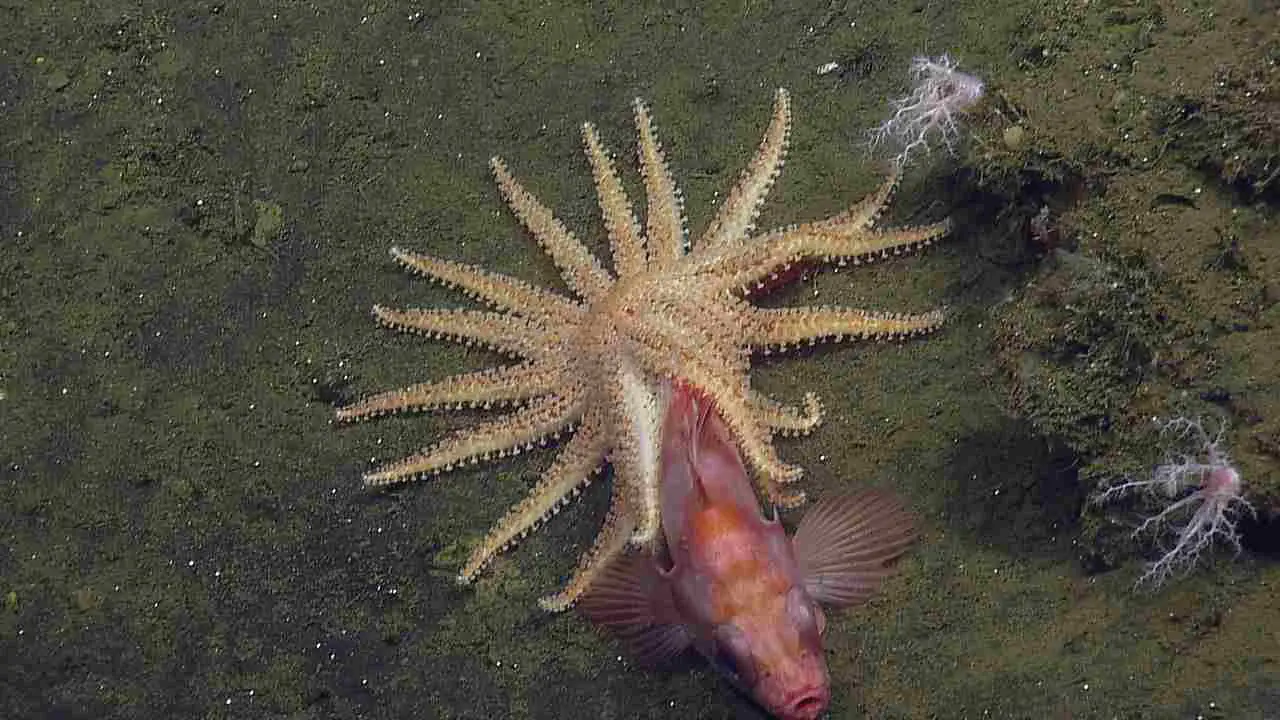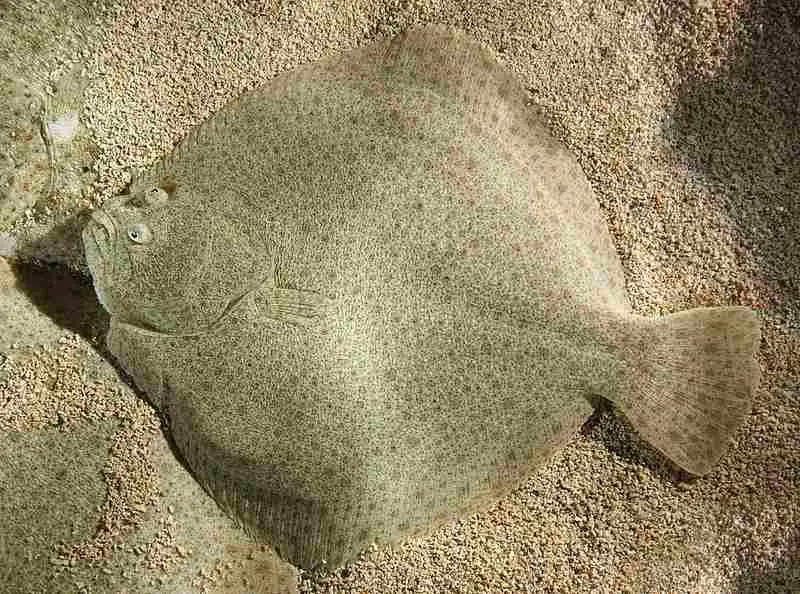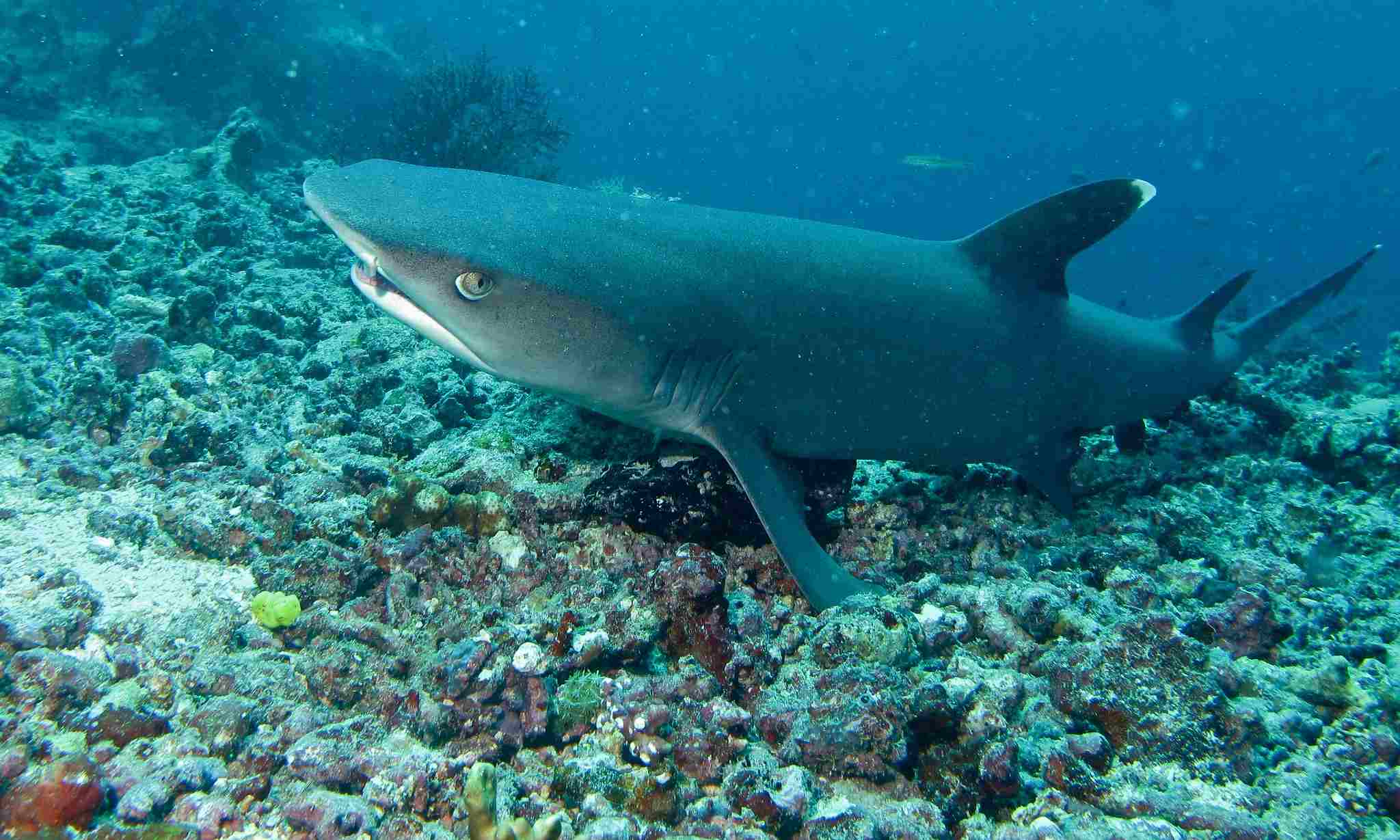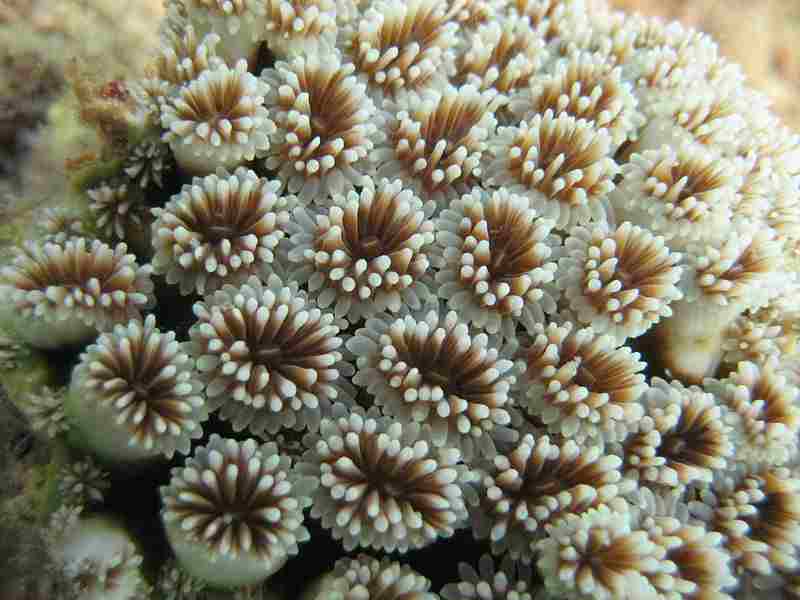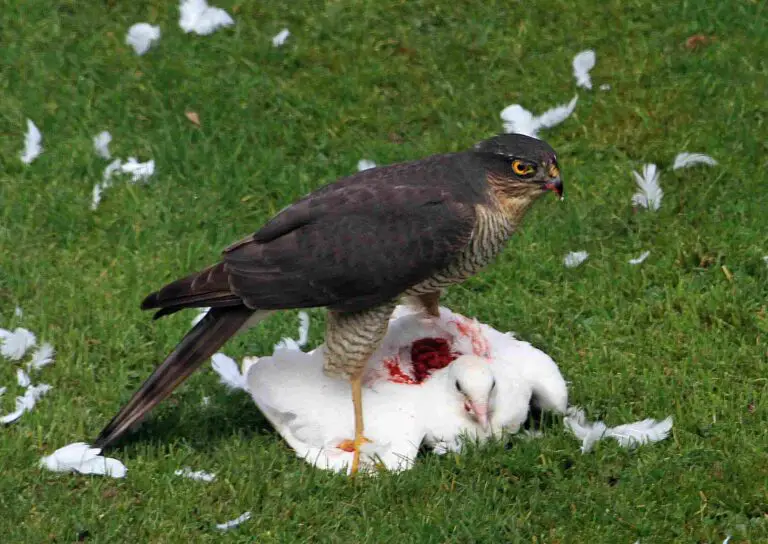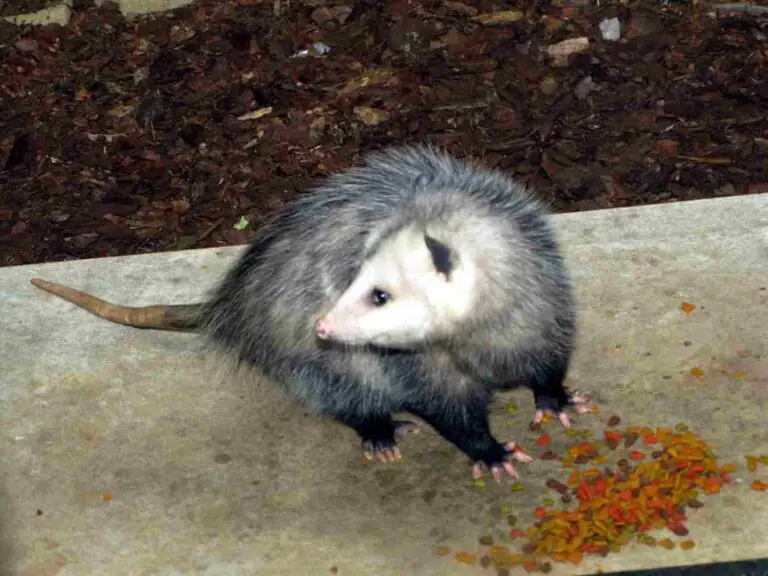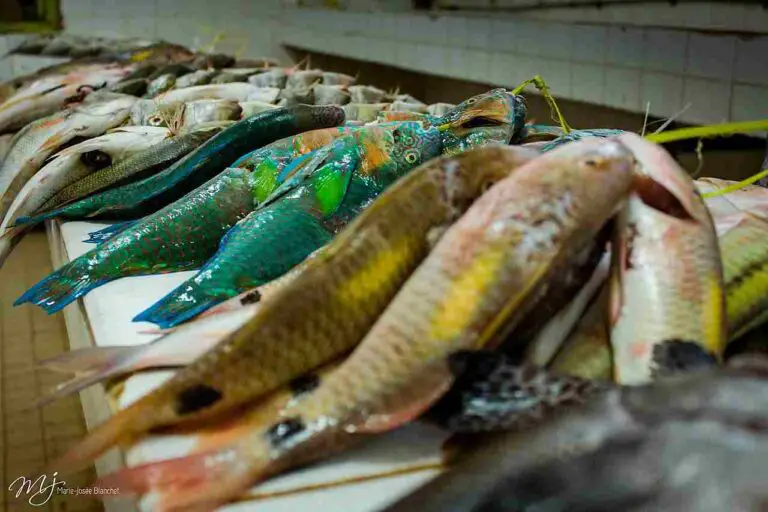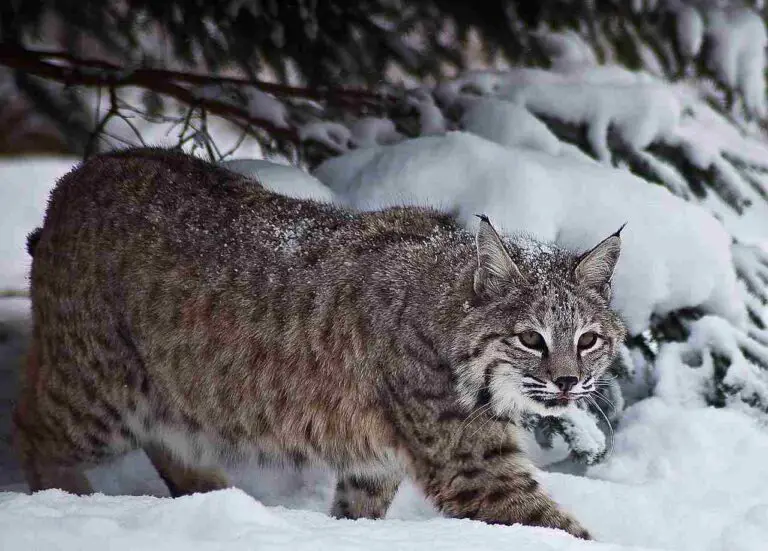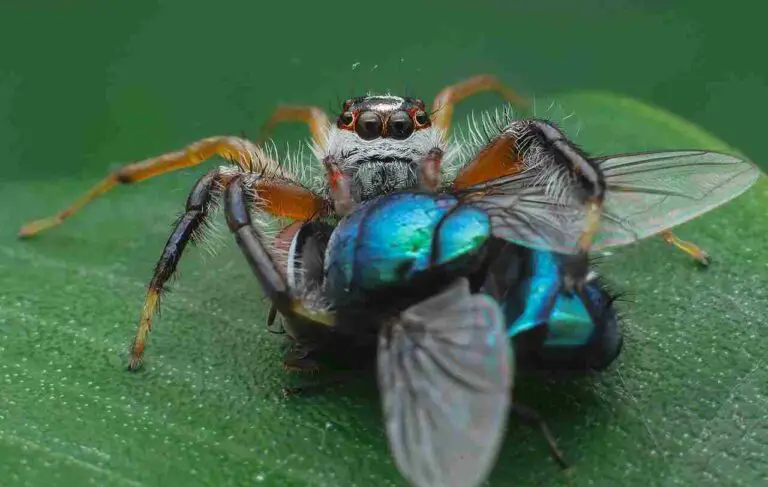What Do Starfish Eat? Starfish Diet Revealed
Starfish mostly feed on other sessile aquatic organisms like mussels, marine snails, anemones, sand dollars, sponges, corals and oysters. This is because such organisms are slow-moving like sea stars, and therefore constitute the most accessible prey.
Starfish also feed on benthic organisms like marine worms, sea cucumbers, and may prey on slow-moving fish or other animals that are injured or sick.
How Do Sea Stars Eat?
Sea stars eat by ejecting their stomachs through their mouths, wrapping these around prey, then digesting the prey externally using enzymes.
This feeding technique is an outcome of evolutionary adaptation, as sea stars lack the dentition and other typical digestive features of more advanced animals.
Below is a brief outline of each stage in the feeding process of sea stars;
1. Stomach Ejection
Stomach ejection is a fascinating stage in the feeding process of sea stars. This unique feeding technique allows them to consume their prey in a rather unconventional way. Using 8th grade level language, let’s explore how stomach ejection works and why it is essential for sea stars’ survival.
When a sea star encounters its prey, it begins the feeding process by extending its stomach out of its mouth. This may sound strange, but it’s a remarkable adaptation that enables sea stars to consume larger prey than their small mouths would typically allow. By extending their stomachs, sea stars can envelop their prey and initiate digestion externally.
Once the sea star’s stomach is wrapped around the prey, it releases powerful enzymes that break down the prey’s tissues. These enzymes are capable of dissolving the prey’s flesh, turning it into a soupy mixture that the sea star can easily absorb. This external digestion process is crucial for sea stars since they lack the traditional teeth and jaws found in other animals.
Stomach ejection not only allows sea stars to consume larger prey, but it also provides them with a significant advantage in capturing and immobilizing their food. By extending their stomachs, sea stars can encircle their prey, effectively trapping it within their grasp. This encirclement technique prevents the prey from escaping and ensures a successful meal for the sea star.
It’s important to note that stomach ejection is not a quick process. Sea stars take their time to carefully wrap their stomachs around their prey, ensuring a secure hold. This patience and precision in capturing their food demonstrate the remarkable adaptability of sea stars as predators.
2. Prey Encirclement
Prey encirclement is another fascinating stage in the feeding process of sea stars. This unique technique allows them to capture and immobilize their food effectively. By using their remarkable adaptability, sea stars employ prey encirclement to ensure a successful meal.
When a sea star detects its prey, it begins the process of encircling it. This involves extending its arms and gradually surrounding the prey, creating a secure hold. The sea star’s arms are equipped with tiny tube feet that provide both mobility and grip, allowing it to maneuver and enclose its prey tightly.
The encirclement technique serves multiple purposes for sea stars. Firstly, it prevents the prey from escaping, ensuring that the sea star can consume its meal without interruption. Secondly, it immobilizes the prey, making it easier for the sea star to initiate the next stage of digestion. By encircling the prey, the sea star effectively traps it within its grasp, increasing its chances of a successful feeding.
Sea stars exhibit remarkable patience and precision during the encirclement process. They carefully position their arms around the prey, ensuring a secure hold and minimizing the risk of escape. This level of precision demonstrates the adaptability and hunting prowess of sea stars as predators.
Prey encirclement is a crucial step in the feeding process of sea stars. It complements the previous stage of stomach ejection, allowing sea stars to capture and immobilize their prey effectively. By employing this technique, sea stars maximize their chances of a successful meal and ensure their survival in their marine environment.
3. External Digestion
External digestion is a fascinating stage in the feeding process of sea stars. This unique method allows them to break down their prey outside of their bodies, making it easier for them to consume and absorb nutrients.
Once a sea star has successfully encircled its prey, it begins the process of external digestion. The sea star releases digestive enzymes onto its prey, which start to break down the prey’s tissues. These enzymes are powerful and efficient, allowing the sea star to extract the nutrients it needs for survival.
The external digestion process serves several purposes for sea stars. Firstly, it allows them to break down larger prey that may be too big to fit into their mouths. By digesting the prey externally, sea stars can consume a wider range of food sources and maximize their chances of obtaining enough nutrients.
Secondly, external digestion helps sea stars to extract nutrients more efficiently. By breaking down the prey’s tissues outside of their bodies, sea stars can absorb the nutrients directly into their system. This method saves energy and allows sea stars to make the most of their food resources.
Sea stars exhibit remarkable adaptability during the external digestion process. They carefully control the release of digestive enzymes, ensuring that they break down the prey’s tissues without damaging their own bodies. This level of precision demonstrates the incredible biological mechanisms that sea stars have developed to survive and thrive in their marine environment.
External digestion is a crucial step in the feeding process of sea stars. It complements the previous stages of prey encirclement and stomach ejection, allowing sea stars to efficiently break down their prey and extract the necessary nutrients. By employing this method, sea stars demonstrate their remarkable ability to adapt and thrive in various ecological niches.
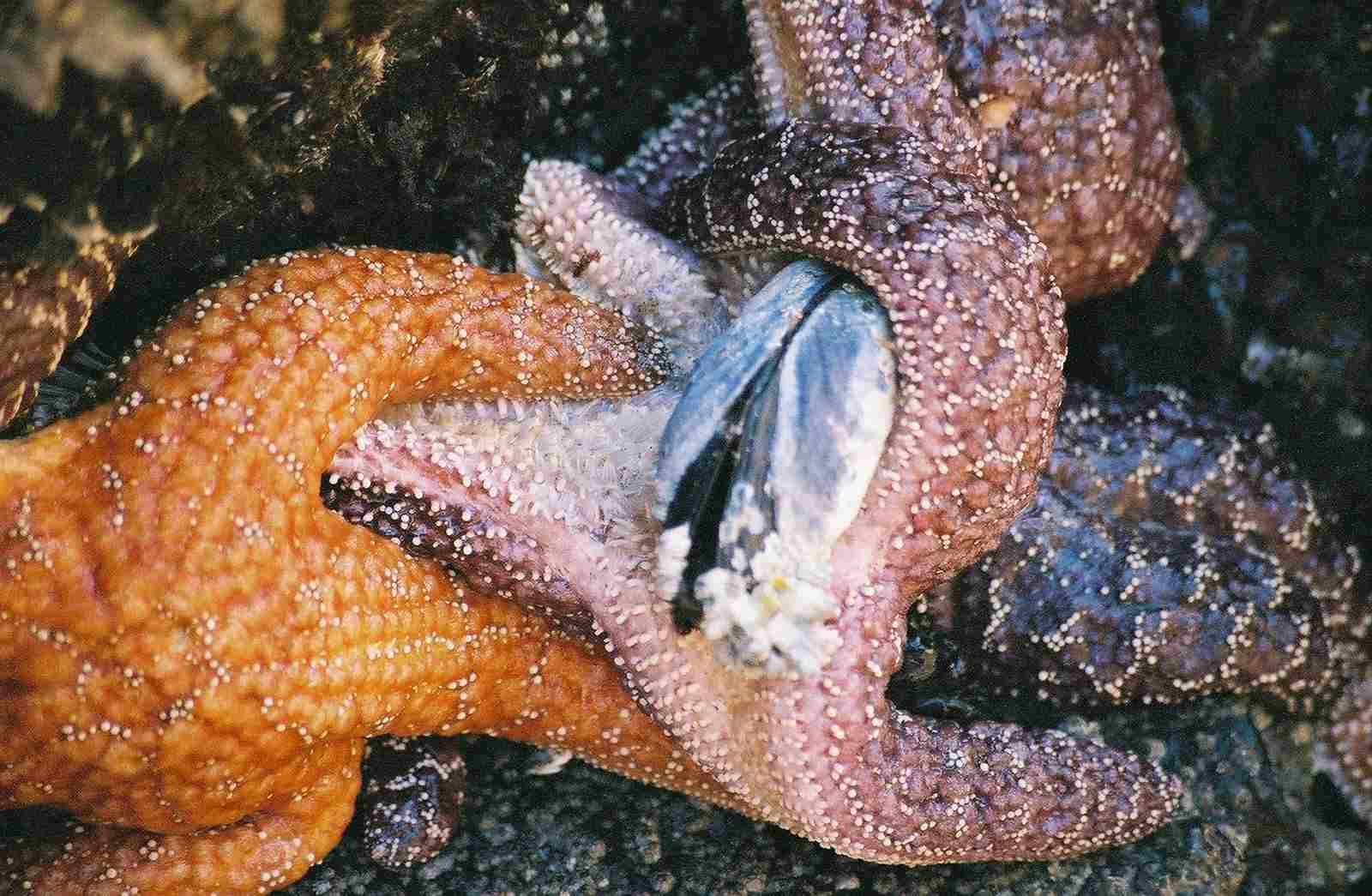
Do Starfish Eat Algae?
While some species of starfish, such as the Egyptian sea star and Asterina starfish, are opportunistic omnivores and will feed on algae, it is important to note that algae is not a major food source for most starfish species. In fact, some starfish are obligate carnivores and are very unlikely to consume algae as part of their diet.
Starfish have a wide range of feeding strategies and preferences, depending on their species and habitat. While some starfish primarily feed on small invertebrates like mollusks and crustaceans, others may consume a variety of organic matter, including algae. However, it is important to understand that algae is not a primary food source for starfish and is often consumed opportunistically or as a supplement to their regular diet.
The Egyptian sea star and Asterina starfish are known to feed on algae when it is available. These starfish are considered opportunistic omnivores, meaning they will consume a variety of food sources depending on what is accessible in their environment. Algae can provide a source of nutrients for these starfish, especially in areas where other food sources may be scarce.
However, it is worth mentioning that algae is not a significant component of the diet for most starfish species. Many starfish are obligate carnivores, meaning they rely primarily on animal-based food sources to meet their nutritional needs. These starfish have specialized feeding mechanisms and digestive systems that are adapted for consuming and digesting prey, rather than plant matter like algae.
The preference for animal-based food sources among starfish is likely due to the higher nutrient content and energy value of animal tissues compared to plant matter. Starfish have evolved to efficiently extract nutrients from their prey through mechanisms such as stomach ejection, prey encirclement, and external digestion. These feeding strategies allow starfish to break down and absorb the nutrients from their prey more effectively, ensuring their survival and growth.
Do Starfish Eat Shrimp?
Yes, larger starfish species like the marble sea starfish have been known to eat shrimp if they are able to capture them. However, it is important to note that this does not occur very often, as shrimp are generally much faster than starfish.
In the vast ocean, shrimp are agile and quick, making it difficult for starfish to catch them. Shrimp have adapted to their environment with their rapid movements, allowing them to evade potential predators like starfish. This means that starfish have to rely on specific circumstances or factors to successfully prey on shrimp.
One such circumstance is when shrimp are injured or sick, causing them to move more slowly than usual. In these cases, starfish may take advantage of the shrimp’s weakened state and capture them as an easy meal. The slower movements of injured or sick shrimp make them more vulnerable to predation by starfish.
Additionally, starfish may also prey on other similar organisms like crabs and small lobsters, depending on various factors such as relative size and speed. If a starfish encounters a shrimp, crab, or small lobster that is smaller and slower than itself, it may attempt to capture and consume it. However, it is important to note that this is not a common occurrence, as starfish have a wide range of other preferred food sources.
Starfish have evolved to be opportunistic feeders, adapting to their surroundings and consuming whatever food sources are available to them. While larger starfish species may occasionally eat shrimp, their diet primarily consists of other marine animals such as clams, mussels, oysters, sea cucumbers, marine snails, and worms. These prey items are more readily accessible and provide a more reliable source of nutrition for starfish.
What Do Starfish Eat in the Ocean?
Most starfish are predatory and carnivorous, so they feed on a variety of marine animals in the ocean. Their diet primarily consists of clams, mussels, oysters, sea cucumbers, marine snails, and worms. These are the main food sources that starfish rely on to meet their nutritional needs.
Clams are a common prey item for starfish in the ocean. Starfish have a unique feeding mechanism called stomach ejection, where they can extend their stomachs out of their bodies to engulf and digest their prey. When a starfish encounters a clam, it uses its tube feet to pry open the clam’s shell and then extends its stomach into the shell to digest the soft tissues inside.
Mussels and oysters are also on the menu for starfish. These bivalve mollusks are often found attached to rocks or other hard surfaces in the ocean. Starfish use their tube feet to grip onto the shells of mussels and oysters, and then they use their powerful arms to pry the shells open. Once the shells are open, the starfish can extend its stomach into the shell and consume the soft tissues of the mollusk.
Sea cucumbers are another food source for starfish in the ocean. Sea cucumbers are soft-bodied animals that live on the ocean floor. Starfish can capture sea cucumbers by encircling them with their arms and then using their tube feet to pull the sea cucumber towards their mouth. Once the sea cucumber is within reach, the starfish can extend its stomach and begin the process of external digestion.
Marine snails and worms are also part of the starfish diet in the ocean. Starfish can capture these smaller prey items by using their tube feet to grasp onto them and then bringing them towards their mouth. Once the prey item is within reach, the starfish can extend its stomach and begin the process of external digestion.
It is important to note that the specific diet of a starfish can vary depending on its species and habitat. Some starfish species may have preferences for certain types of prey, while others may have a more generalist diet. Additionally, the availability of food sources in the ocean can also influence the diet of starfish.
What Do Starfish Eat in a Tank?
In a tank, starfish have a slightly different diet compared to their natural habitat. They primarily feed on leftover fish food and algae. Leftover fish food can be a convenient food source for starfish in a tank, as it provides them with the necessary nutrients. Algae, on the other hand, can serve as a natural food source for starfish in a tank. Starfish are known to graze on algae, which can help to maintain a balanced ecosystem within the tank.
It is important to note that the specific diet of starfish in a tank can vary depending on the tank’s conditions and the availability of food sources. Some starfish species may also consume other biogenic materials in the substrate, such as smaller aquatic organisms like snails. The versatility of starfish in their diet allows them to adapt to different tank environments.
When feeding starfish in a tank, it is recommended to provide them with a varied diet to ensure they receive all the necessary nutrients. This can include commercially available starfish food, as well as occasional treats like small pieces of shrimp or other marine invertebrates. It is important to monitor the feeding habits of starfish in a tank and adjust their diet accordingly to maintain their health and well-being.
What Do Starfish Eat in Aquariums?
In aquariums, starfish have a similar diet to what they eat in tanks. As scavengers, they have a versatile appetite and will consume a variety of food sources. One of the main food sources for starfish in aquariums is algae. Algae serves as a natural and nutritious food source for these marine creatures. Starfish are known to graze on algae, helping to maintain a healthy and balanced ecosystem within the aquarium.
In addition to algae, starfish in aquariums may also feed on leftover fish food. This can be a convenient food source for them, as it provides the necessary nutrients they need to thrive. It is important to note that the specific diet of starfish in aquariums can vary depending on the conditions of the aquarium and the availability of food sources. Some starfish species may even consume other biogenic materials in the substrate, such as smaller aquatic organisms like snails.
To ensure the health and well-being of starfish in aquariums, it is recommended to provide them with a varied diet. This can include commercially available starfish food, which is specifically formulated to meet their nutritional needs. Additionally, occasional treats like small pieces of shrimp or other marine invertebrates can be offered to provide additional variety in their diet.
Monitoring the feeding habits of starfish in aquariums is crucial. Observing their behavior during feeding can help determine if they are receiving enough food and if any adjustments need to be made. It is important to feed starfish in aquariums at least once every two to four days to ensure they are getting enough nutrients. However, the frequency of feeding can also depend on the size of the starfish, the species, the availability of food, and the presence of potential predators or competitors.
How Often Do Starfish Eat?
The frequency of starfish feeding can vary depending on several factors. These factors include the size and species of the starfish, the availability of food, the presence of potential predators or competitors, and their predatory nature. Larger and more predatory starfish tend to eat more often than smaller and less predatory ones.
In their natural habitat, starfish can eat multiple times daily or once in multiple days, depending on the availability of food sources. However, when kept in tanks or aquariums, starfish should be fed at least once every two to four days to ensure they receive enough nutrients.
Feeding starfish in tanks or aquariums is crucial for their health and well-being. Observing their behavior during feeding can help determine if they are receiving enough food and if any adjustments need to be made. It is important to monitor their feeding habits and adjust the frequency of feeding accordingly.
By providing a balanced and varied diet, including commercially available starfish food and occasional treats like small pieces of shrimp or other marine invertebrates, you can ensure that your starfish receive the necessary nutrients and maintain their overall health. Remember to consider the specific needs of your starfish species and the conditions of your tank or aquarium when determining their feeding schedule.
How to Feed Starfish
Feeding starfish requires a few simple steps including food selection, storage, preparation and provision, to ensure they receive the proper nutrition.
The first step is food selection and storage. Starfish typically eat protein-rich aquatic foods such as mussels, clams, and shrimp. It is important to store these foods by freezing them rather than cooking them, as cooking can remove essential nutrients.
The next step is food preparation. To make it easier for starfish to consume, slice the food into smaller cubes. This allows them to easily grasp and consume the food without any difficulties.
Finally, food provision is the last step in feeding starfish. Place the food in the tank or aquarium, especially on the substrate where the starfish can easily reach it. This ensures that they have easy access to their food and can feed at their own pace.
FAQs
1. Can Starfish Bite?
No, starfish do not have the ability to bite or sting. Unlike some other marine animals, starfish do not possess teeth or venomous stingers. They rely on a different set of adaptations to survive and thrive in their underwater environment.
While most starfish are harmless to humans, there is one species called the crown-of-thorns starfish that can be venomous and even poisonous. This species has venomous spines that can cause painful stings if touched. However, it’s important to note that these encounters are rare and typically occur when humans come into direct contact with the starfish.
In general, starfish are not aggressive towards humans and do not pose a threat. They are more interested in feeding on their preferred prey and navigating the ocean floor. Their diet primarily consists of small invertebrates such as mollusks, crustaceans, and even other starfish. Some species of starfish are known to feed on coral, which can have detrimental effects on coral reef ecosystems.
2. What Animal Only Eats Starfish?
Starfish have a variety of predators in their natural habitat. While they may not be the top choice for every predator, there are some animals that significantly feed on starfish, including; leatherback sea turtle, seagull, red king crab, manta ray, octopus, sea otter, some predatory fish, and larger starfish.
One of the main predators of starfish is the leatherback sea turtle. These massive turtles have a diet that consists mainly of jellyfish, but they also feed on starfish when they come across them. Seagulls are another animal that occasionally preys on starfish. These birds have a diverse diet and will eat almost anything they can find, including starfish.
The red king crab is known to be a predator of starfish as well. These large crustaceans have powerful claws that they use to crush and consume starfish. Another predator of starfish is the manta ray. These graceful creatures glide through the water, using their wide mouths to scoop up small marine animals, including starfish.
Octopuses are also known to feed on starfish. With their flexible bodies and strong tentacles, octopuses can easily capture and consume starfish. Sea otters, although primarily known for their love of shellfish, have been observed eating starfish as well.
Some predatory fish, such as groupers and triggerfish, also include starfish in their diet. These fish have sharp teeth and powerful jaws that allow them to crush and consume starfish. Additionally, larger starfish can even prey on smaller starfish, making them cannibalistic predators within their own species.
3. Can Starfish Survive in Water?
Starfish are well-adapted to survive in water, as it is their natural habitat. They have a unique water vascular system that helps them move, breathe, and capture prey. It is important to note that starfish cannot survive for long periods of time outside of water.
When starfish are removed from water, most of them will suffocate shortly after. This is because starfish rely on water to obtain oxygen through their tube feet and papulae, which are small, finger-like projections on their bodies. Without access to water, their respiratory system cannot function properly, leading to suffocation.
Additionally, water is crucial for starfish to maintain their internal balance and hydration. They have a high salt content in their bodies, and being in water helps regulate this salt balance. Without water, starfish can quickly become dehydrated, which can be detrimental to their overall health and survival.
It is worth mentioning that some species of starfish have developed adaptations that allow them to survive in intertidal zones, where they may experience periods of exposure to air during low tide. These starfish have the ability to close their pores and retain moisture, which helps them withstand short periods of time out of water. However, they still require water to thrive and cannot survive indefinitely without it.
4. How Long Does a Starfish Live?
The lifespan of a starfish can vary depending on the species, but on average, they live for about 22 years. However, there is a range, and some starfish can live as short as 10 years or as long as 34 years. In exceptional cases, certain species of starfish have been known to live up to 35 years.
The longevity of a starfish is influenced by various factors, including its habitat, diet, and environmental conditions. Starfish that live in favorable environments with abundant food sources and minimal predation tend to have longer lifespans. On the other hand, starfish living in harsher conditions or facing higher predation pressures may have shorter lifespans.
It is important to note that the lifespan of a starfish can also be affected by human activities, such as pollution and habitat destruction. These factors can disrupt the starfish’s natural ecosystem and impact their ability to survive and thrive.
5. What Does a Starfish Eat?
One of the primary food sources for starfish is mollusks, such as clams, mussels, and oysters. With their tube feet and powerful suction, starfish can pry open the shells of these mollusks and extract their soft flesh. This feeding behavior is particularly common among certain species of starfish, like the Pacific blood star and the sunflower star.
In addition to mollusks, starfish also feed on crustaceans, including crabs and shrimp. They use their tube feet to grab onto the exoskeletons of these creatures and slowly pry them apart to access the meat inside. This feeding behavior is more prevalent in larger species of starfish, like the crown-of-thorns starfish.
Furthermore, starfish are known to consume small fish and even other starfish. They capture their prey by extending their stomachs out of their mouths and enveloping the food item. This unique feeding mechanism allows starfish to consume prey that is larger than their mouths.
It’s important to note that starfish are opportunistic feeders and will consume whatever food sources are available in their environment. This can include detritus, algae, and even dead animals. Their ability to adapt their diet to the available resources contributes to their survival in various marine habitats.
6. Will Shrimp Eat Starfish?
When it comes to the relationship between shrimp and starfish, the answer is not as straightforward as one might think. While it is true that large shrimp have been known to eat smaller starfish, this behavior is not very common or frequent.
Shrimp are generally opportunistic feeders, consuming a variety of small organisms and detritus. They have been observed to scavenge on dead starfish, but actively preying on live starfish is not their typical behavior.
In the marine ecosystem, starfish are not a primary food source for shrimp. Shrimp tend to feed on smaller invertebrates, such as small crustaceans, worms, and plankton. They are more likely to target these smaller prey items rather than larger starfish.
It’s important to note that the size difference between shrimp and starfish plays a significant role in their interactions. Larger shrimp may be more capable of capturing and consuming smaller starfish, but this is not a common occurrence.
7.Do Starfish Eat Crustaceans?
Starfish have the ability to eat crustaceans, but it is not their typical or frequent behavior. The question of whether starfish eat crustaceans can be answered with a “yes,” but it is important to understand the context in which this occurs.
In their natural habitat, starfish are slow-moving creatures, making it difficult for them to capture and consume fast-moving crustaceans. While starfish have been observed feeding on crustaceans, such as crabs, it is not a common occurrence.
The feeding habits of starfish primarily revolve around their preference for mollusks, such as snails and clams. These soft-bodied organisms are easier for starfish to capture and consume due to their sedentary nature.
It is worth noting that the size of the starfish and the crustacean also play a role in their interactions. Larger starfish may have a better chance of capturing and consuming smaller crustaceans, but this is not a regular part of their diet.
8. Do Starfish Eat Shrimp in the Ocean?
Yes, starfish do eat shrimp in the ocean if they can capture them. Starfish have a varied diet and are opportunistic feeders, meaning they will consume any prey they can catch and overpower. Shrimp are small crustaceans that inhabit the same marine environment as starfish, making them potential prey.
When it comes to capturing shrimp, starfish rely on their unique feeding strategy. They have tube feet equipped with suction cups that allow them to grip onto surfaces and slowly approach their prey. Once within reach, starfish use their arms to pry open the shells of shrimp or other small crustaceans, exposing the soft flesh inside.
It’s important to note that not all starfish species have the same feeding habits. Some species are more specialized in consuming certain types of prey, while others have a broader diet. Additionally, the size of the starfish and the shrimp can also influence their interactions. Larger starfish may have an easier time capturing and consuming smaller shrimp.
9. Do Starfish Eat Shrimp in a Tank?
Yes, starfish can eat shrimp in a tank if they are available and the starfish can capture them. Starfish are known to be opportunistic feeders, meaning they will consume any prey they can catch and overpower. Shrimp, being small crustaceans, can be potential prey for starfish in a tank environment.
In a tank, starfish rely on their unique feeding strategy to capture shrimp. They use their tube feet equipped with suction cups to grip onto surfaces and slowly approach their prey. Once within reach, starfish use their arms to pry open the shells of shrimp, exposing the soft flesh inside.
It’s important to note that the ability of starfish to eat shrimp in a tank may depend on various factors. The size of the starfish and the shrimp can influence their interactions. Larger starfish may have an easier time capturing and consuming smaller shrimp. Additionally, the tank environment should provide enough hiding places and spaces for the starfish to hunt and feed.
If you have a tank with both starfish and shrimp, it’s essential to monitor their interactions closely. While starfish can eat shrimp, it’s also possible for shrimp to hide or escape from starfish. Providing ample hiding spots and ensuring a balanced tank ecosystem can help promote the well-being of both starfish and shrimp.
10. Do Starfish Eat Phytoplankton?
Starfish have a diverse diet, and while some species are carnivorous, others are herbivorous. When it comes to phytoplankton, some starfish do eat them. Phytoplankton are microscopic plants that float in the water, and they serve as a primary food source for many marine organisms.
Certain species of starfish, especially those found in intertidal zones, feed mainly on phytoplankton and macroalgae. These starfish have adaptations that allow them to consume these tiny plants. They use their tube feet to capture the phytoplankton and bring them towards their mouth located on the underside of their body.
In addition to phytoplankton, these herbivorous starfish also consume macroalgae, which are larger seaweeds. They use their tube feet and specialized mouthparts to scrape the algae off rocks or other surfaces.
It’s important to note that not all starfish eat phytoplankton. Some species have different dietary preferences, such as feeding on small invertebrates or even other starfish. The specific diet of a starfish depends on its species and habitat.
11. Do Starfish Eat Snails?
Starfish do eat snails, particularly smaller ones. The reason starfish are able to capture and consume snails is because snails are generally slow-moving creatures. This makes them an easy target for starfish, which have the ability to use their tube feet to capture and bring their prey towards their mouth located on the underside of their body.
When it comes to their diet, starfish are known to be opportunistic feeders, meaning they will consume whatever prey is available to them. While snails may not be the primary food source for all starfish species, they are certainly on the menu for some.
It’s important to note that the specific diet of a starfish can vary depending on its species and habitat. Some starfish may have different dietary preferences, such as feeding on small invertebrates or even other starfish. The availability of snails in their environment will also play a role in determining whether or not starfish will consume them.
12. Do Starfish Eat Kelp?
Starfish do not usually eat kelp as it is not their primary food source. However, in certain circumstances, starfish may thrive in kelp forests and prey on sea urchins that, in turn, graze on kelp.
Kelp forests provide a rich and diverse ecosystem for marine life, and starfish can be found in these habitats. While starfish primarily feed on small invertebrates, such as snails and crustaceans, they may opportunistically consume sea urchins if they are present in the kelp forest. Sea urchins are known to graze on kelp, and starfish can play a role in controlling their population by preying on them.
It’s important to note that not all starfish species will eat sea urchins or inhabit kelp forests. The specific diet and habitat preferences of starfish can vary depending on their species and the availability of prey in their environment.
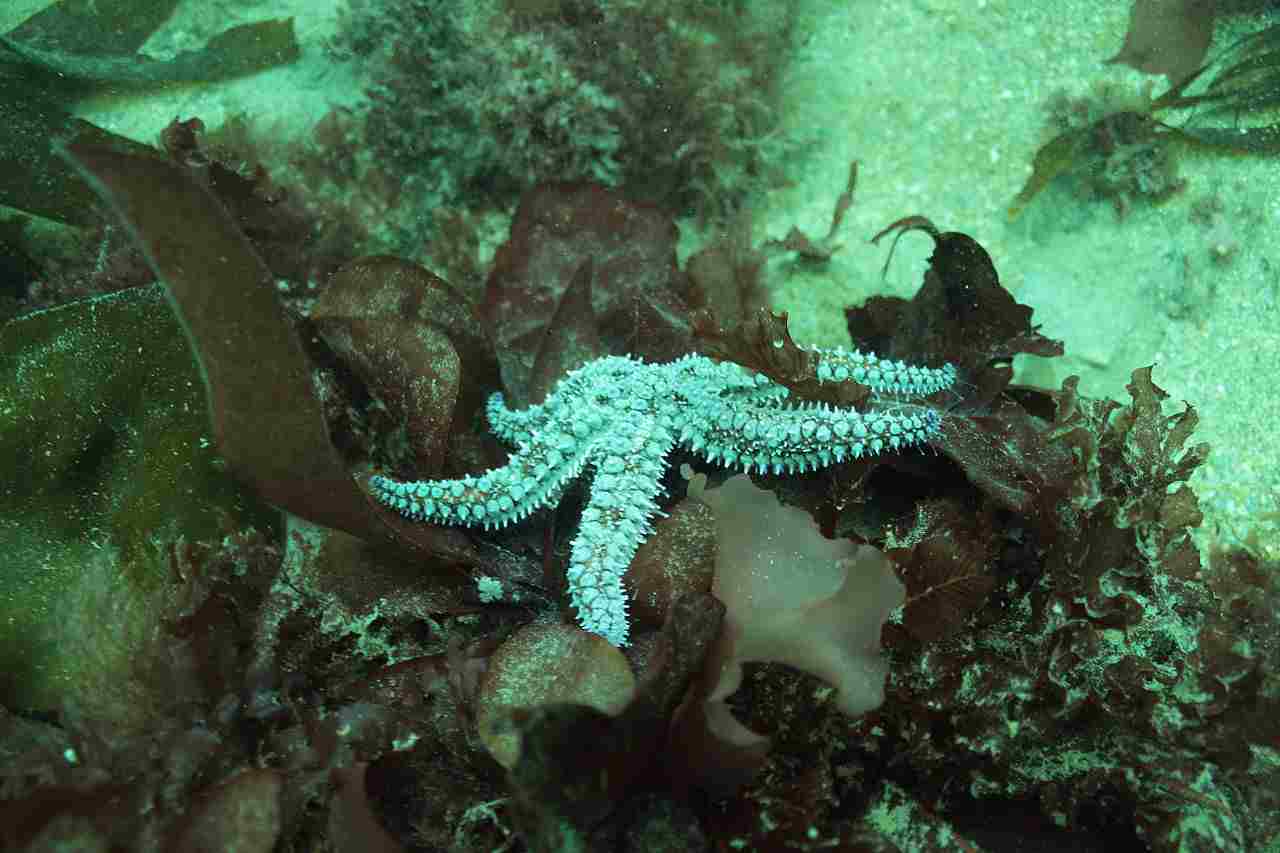
13. Do starfish Eat Crabs?
Starfish do not usually eat crabs due to the speed and relative strength of crabs. However, under favorable circumstances, starfish may consume crabs as part of their diet. It’s important to note that not all species of starfish will eat crabs, and their feeding habits can vary depending on their environment and prey availability.
On the other hand, some species of crabs, such as king crabs, may also prey on starfish. This creates a dynamic relationship between starfish and crabs, where they can act as both predator and prey to each other.
While starfish primarily feed on small invertebrates like snails and crustaceans, the consumption of crabs is not a common occurrence. The diet of starfish is influenced by various factors, including their species, habitat, and the availability of prey.
14. Do Starfish Eat Fish?
Yes, starfish do eat fish, especially small ones that are slow-moving or injured. While it may seem surprising, starfish have a diverse diet and can consume a variety of marine organisms. However, it’s important to note that not all species of starfish eat fish, and their feeding habits can vary depending on their environment and prey availability.
Starfish are opportunistic feeders and will consume any prey they can catch and overpower. They have a unique feeding mechanism that allows them to pry open the shells of their prey and extract the soft tissues inside. This makes them capable of feeding on a wide range of organisms, including fish.
It’s worth mentioning that fish are not a primary food source for starfish. They primarily feed on small invertebrates like snails, crustaceans, and other marine invertebrates. Fish are more likely to be consumed by larger predatory species in the ocean.
15. What Do Baby Starfish Eat?
Baby starfish, also known as juveniles, have a different diet compared to adult starfish. These young creatures primarily feed on algae, bacteria, and protists. As they are still growing and developing, their nutritional needs differ from those of adult starfish.
Algae, which are simple aquatic plants, provide an important food source for baby starfish. They consume the microscopic algae that float in the water, helping them to obtain the necessary nutrients for their growth. Additionally, baby starfish also feed on bacteria and protists, which are single-celled organisms found in marine environments.
It is crucial for baby starfish to have a diet rich in these microorganisms as they provide essential nutrients and energy for their development. As they mature and grow larger, their diet will gradually shift to include a wider range of prey, such as small invertebrates like snails and crustaceans.
16. Do Starfish Eat Coral?
Certain species of starfish, such as the crown-of-thorns, can indeed consume significant amounts of coral. These starfish have a unique feeding mechanism where they can eject their stomachs and externally digest the coral. This allows them to break down the coral’s tissues and extract the nutrients they need for survival.
The crown-of-thorns starfish, in particular, is known for its voracious appetite for coral. It can cause significant damage to coral reefs by feeding on the polyps and skeleton of the coral. This can have detrimental effects on the overall health and biodiversity of the reef ecosystem.
It is important to note that not all starfish species eat coral. Many starfish species have different dietary preferences, ranging from algae and small invertebrates to detritus and sponges. However, for those species that do consume coral, it is a crucial part of their diet and plays a role in shaping marine ecosystems.
17. Do Chocolate Chip Starfish Eat Algae?
Chocolate Chip Starfish, also known as Protoreaster nodosus, are omnivorous and opportunistic feeders. They have a diverse diet that includes algae, sponges, and detritus. Algae, in particular, can be a part of their diet.
Algae are a primary food source for many marine organisms, including starfish. Chocolate Chip Starfish may consume different types of algae that are available in their habitat. Algae provide essential nutrients and energy for these starfish, contributing to their overall health and survival.
In addition to algae, Chocolate Chip Starfish may also feed on sponges. Sponges are filter-feeding organisms that can be found in various marine environments. These starfish have specialized tube feet and mouthparts that allow them to extract and consume the soft tissues of sponges.
Furthermore, Chocolate Chip Starfish are opportunistic feeders, meaning they will consume whatever food sources are readily available. This can include detritus, which consists of decaying organic matter in the water. They scavenge for food particles and debris, utilizing their tube feet and mouth to capture and ingest the detritus.
18. Do Squid Eat Starfish?
Squid do not usually eat starfish, but larger species may occasionally prey on them. Squid are carnivorous marine creatures that primarily feed on small fish, crustaceans, and other cephalopods. While starfish are not a typical part of their diet, there have been rare instances where larger squid species have been observed consuming starfish.
Squid have a voracious appetite and are known for their hunting skills. They have sharp beaks and tentacles equipped with suckers, which they use to capture and subdue their prey. Their diet mainly consists of fast-moving prey, such as fish and shrimp, which they catch using their agility and speed.
However, it’s important to note that the majority of squid species do not actively seek out starfish as a food source. Starfish have a tough exoskeleton and spiny arms, which can make them less desirable prey for squid. Squid are more likely to target smaller, more agile prey that they can easily capture and consume.
Conclusion
* The sections of this article have covered a wide range of topics related to starfish and their eating habits.
* We addressed common questions such as whether starfish can bite and what animals eat starfish.
* We then explored the survival of starfish in water and their lifespan.
* The main focus of this article, however, has been on what starfish eat.
* We discussed whether shrimp and crustaceans are part of their diet, both in the ocean and in a tank.
* We also looked at whether starfish eat phytoplankton, snails, kelp, crabs, and fish.
* Additionally, we explored the eating habits of baby starfish, coral-eating starfish, and chocolate chip starfish.
* Finally, we addressed the question of whether squid eat starfish.
Throughout these sections, we have provided information on the eating habits of starfish and their interactions with other marine organisms.
We have highlighted that starfish primarily feed on small invertebrates such as mollusks, crustaceans, and other small animals.
While they may occasionally consume other organisms, their diet mainly consists of prey that is slow-moving or attached to surfaces.
Starfish use their tube feet and specialized mouthparts to capture and consume their food.
While they primarily feed on invertebrates such as mollusks and crustaceans, they may also consume other organisms depending on their availability.
It is important to note that the specific diet of a starfish can vary depending on its species and habitat.
Further research is needed to continue expanding our knowledge of starfish and their dietary preferences.
